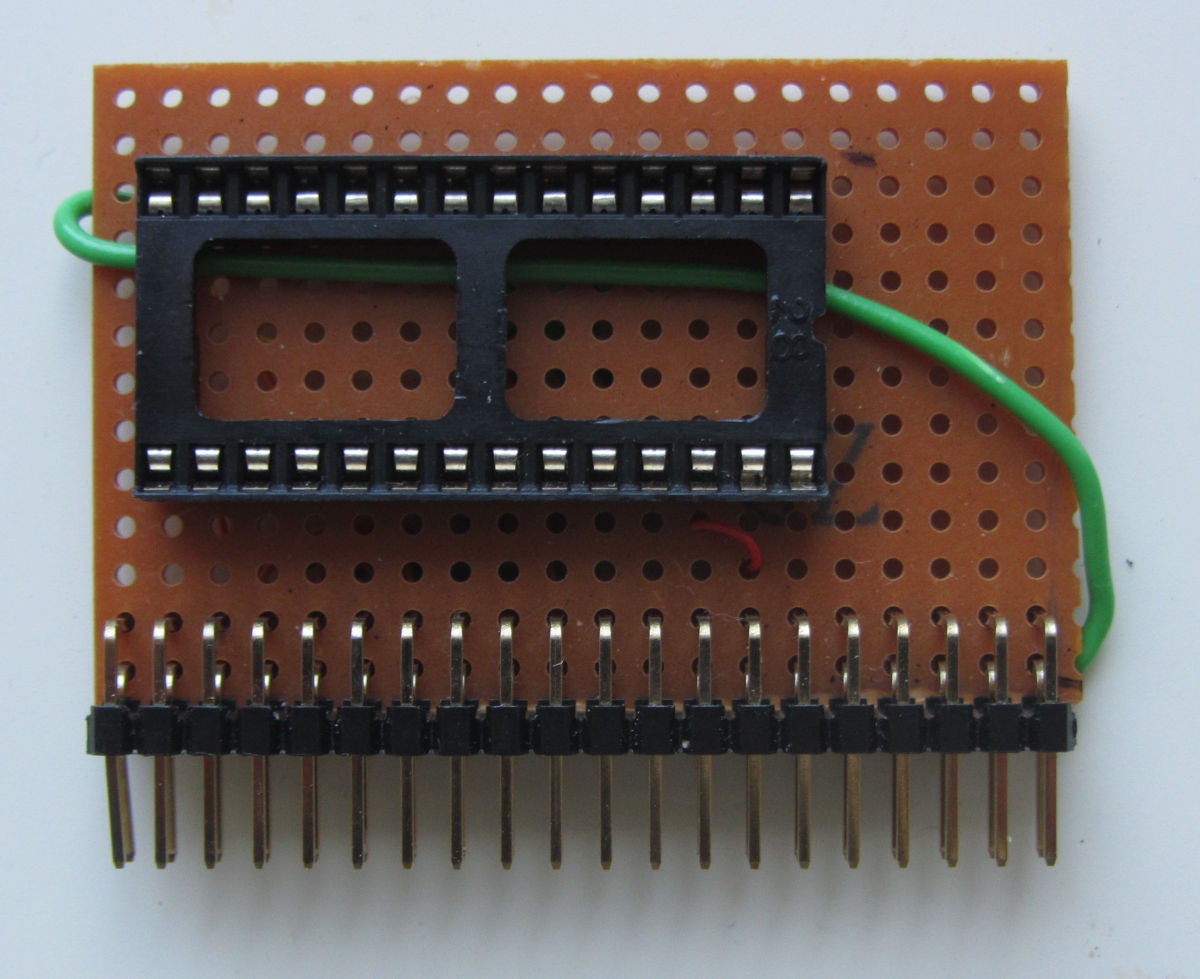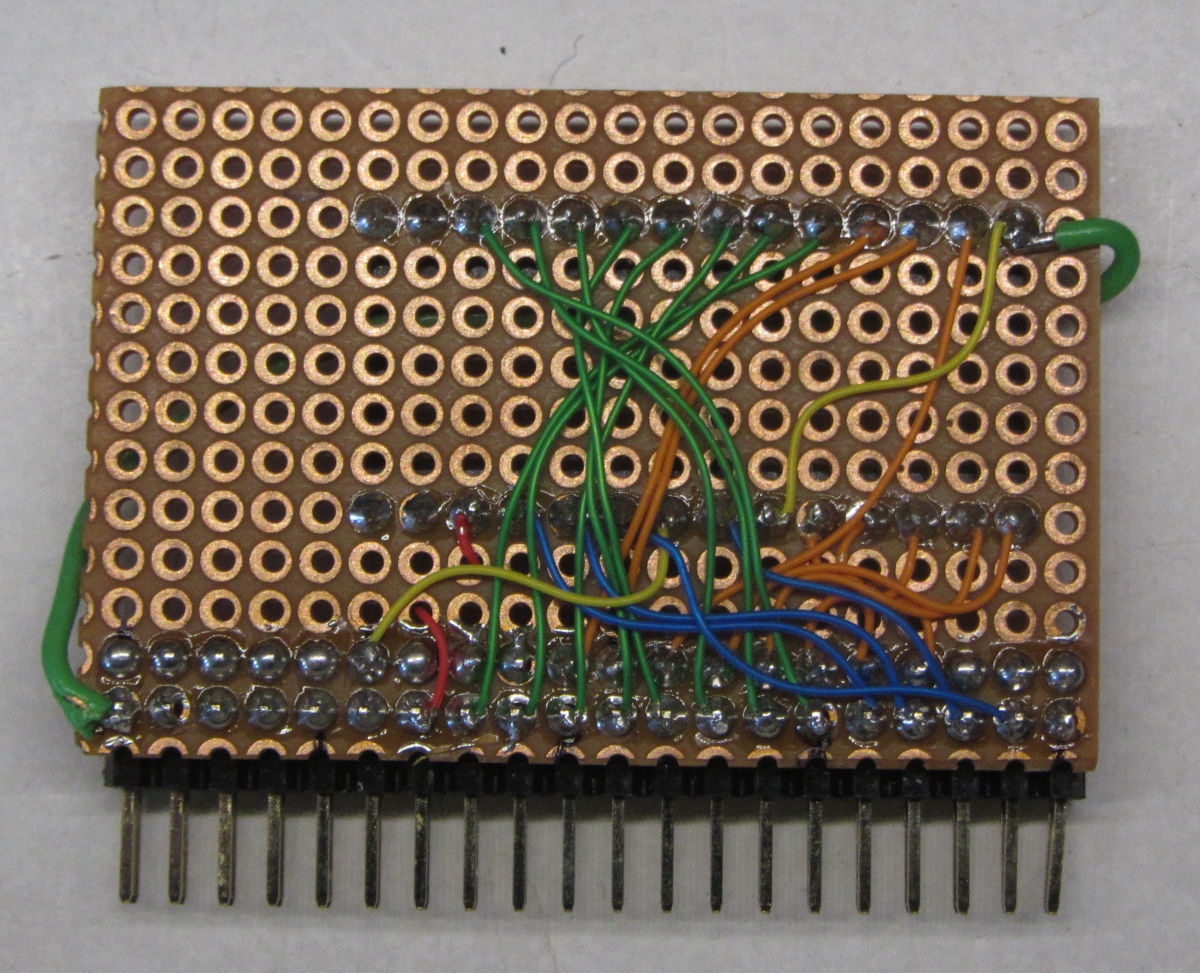
 .
.
The MicroKit09 has several ways to store programs, but neither are very attractive; entering programs via the keyboard is tedioius and saving/loading them on cassette tape isn't very 21-first century. Creating 6809 software by hand isn't much fun for long either.
My solution for now is to use a cross-assembler on Linux in combination with an Arduino based ROM-emulator. This allows writing code in a modern editor/IDE, assemble it on Linux, and uploading it to the MicroKit09 without any physically moving parts, making it (potentially) very robust. It assumes an extra memory socket, next to the ROM (for the monitor) and RAM. That was the first board using the extension connector.
This solution was tested before with the MicroProfessor MPF I. Here the socket is wired for a 2732 compatible chip, allowing for 4 kByte of code. The MicroKit09 uses 8 kByte memory blocks.
An expansion plan was to add a serial interface and reuse an existing monitor. The selected monitor was Assist09, which could use an MC6840 PTM for a single step function. A board with both an MC6840 and MC6850 was developed. The Assist09 code is finally adapted to this hardware. It is not (yet) integrated in the existing monitor, but just replaces it.
As there is only one expansion connector, there would be no room for the extra memory socket needed for software development. Adding a bus of sorts would be an option, but as the MicroKit09 MK2 is a simple Single Board Computer (in two parts), it would never be a proper serious computer. So a simple interim board was made with the memory socket. Any developed/ported serial monitor software could be added to the monitor ROM. The original monitor is 2 kByte, but the memory range for the socket is 8 kByte.
The first rudimentary version of the Serial Monitor is at the github page.
The hardware part of the development system
Last update: 2025-08-01